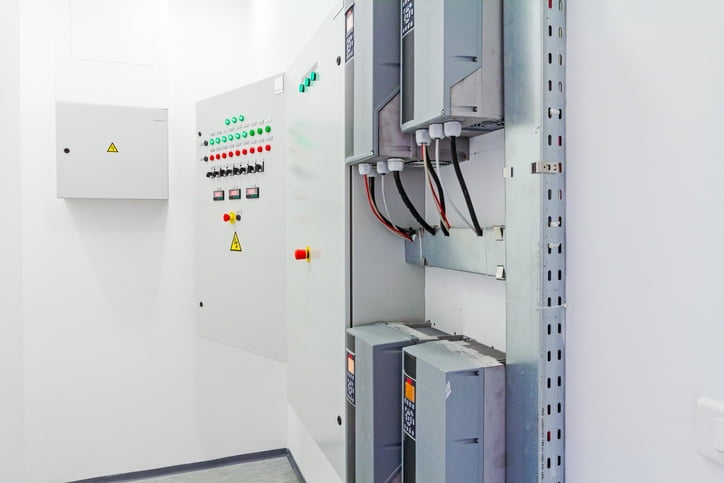Why Cooling is Critical for Your Industrial Control Panel Enclosure

Industrial control panel designers often overlook the importance of effective enclosure cooling. For this reason, many panels are designed for natural ventilation and insufficient consideration is given to the combined effects of ambient temperature and enclosure heat load. This results in an inability to maintain the cabinet’s internal temperature at a safe level.
The consequence of this is that equipment may get too hot, especially during hot weather, leading to an increased risk of equipment failure and shortening of equipment life. This risk can be minimized if control panel temperatures are monitored and, where necessary, enclosure cooling systems installed.
Why Do Industrial Control Panels Get Hot?
The temperature of an industrial control panel enclosure is directly related to the rate of heat generated inside the panel as well as the rate that the heat is removed. The increased use of electronic and microprocessor-controlled electrical control gear means that control systems generate more heat than in the past. This is exacerbated by the increased use of electronic drives that generate a substantial amount of waste heat. In addition to that, there’s a natural tendency to increase the packing density of equipment inside control panels to save space and to allow the use of smaller enclosures.
Consequences of Inadequate Cooling
The ability of electrical control equipment to operate successfully at high temperatures varies enormously. Although manufacturers often rate equipment for operation at high temperatures, it should be understood that equipment life invariably suffers. Apart from that, sensitive equipment such as power supplies, precision measuring devices and controllers may suffer unacceptable set point drift. It is also not unusual for microprocessor-controlled devices like PLCs to malfunction at high temperatures and, once temperatures fall, to operate normally.
Important Cooling Factors
A methodical approach to industrial control panel enclosure cooling ensures that the internal temperature of an enclosure is predictable and that heat related incidents are avoided.
As a first step, it is absolutely essential to evaluate the maximum temperature that can be tolerated inside the enclosure. The temperature chosen should be conservative because this ensures trouble-free operation, and it’s commonly recommended that this temperature should not exceed 35°C (95°F).
The next step is to assess the amount of heat that is generated inside the enclosure. Relevant heat dissapation information is readily available from equipment manufacturers, and by totaling the individual losses, the total heat load in watts can be calculated. If the enclosure is subject to external heat sources like the sun, this radiant contribution should also be taken into account.
The third important factor is to accurately assess the ambient temperature range as this determines the type of cooling solution that can be used. It’s easy to make a mistake because the temperature where the control panel is installed is often higher than outside ambient temperatures, due to effects like solar radiation on the building and heat generating equipment inside the building.
Once these factors have been assessed, a thermal heat load calculation can be performed. Although it’s possible to do this manually, it’s easier and more accurate to use an online Enclosure Temperature Management Calculator to calculate the enclosure cooling capacity that’s needed.
Practical Cooling Alternatives
Several cooling alternatives are possible. The simplest option is to use ventilation fans to remove the heat from the enclosure. This is viable provided the ambient temperature is lower than the desired enclosure temperature. The reason for this is that fans can only remove heat, they don’t actively cool, which is an erroneous assumption often made by maintenance personnel. If fans are used, they should always be fitted with filters.
It often happens that it’s necessary to seal the enclosure to prevent the ingress of dirt, dust, water or corrosive chemicals. If this is the case, then an alternative solution is an air to air heat exchanger.
Like fans, air to air heat exchangers remove heat; they cannot cool the enclosure to below the ambient temperature. If the ambient temperature is higher than the desired enclosure temperature, then the only viable solution is to use an enclosure air conditioner. In many ways, an air conditioner is the best enclosure cooling solution because of its ability to control the enclosure temperature to within a few degrees, avoiding the natural temperature swings that will be experienced with other cooling solutions. Also worth considering is the ability to dehumidify the air, which is a boon in damp climates.
To find out more about keeping your industrial control panel enclosures cool, speak to our nationwide technical sales specialists. They will be able to assess your needs and advise you on the best cooling solution for your industrial control panels.

